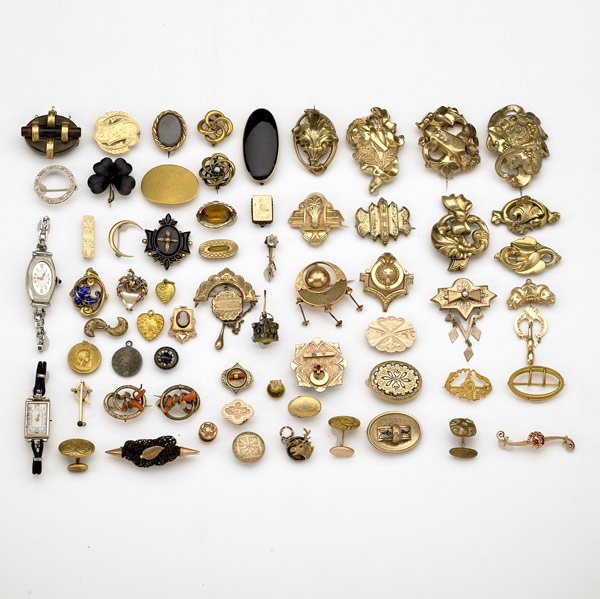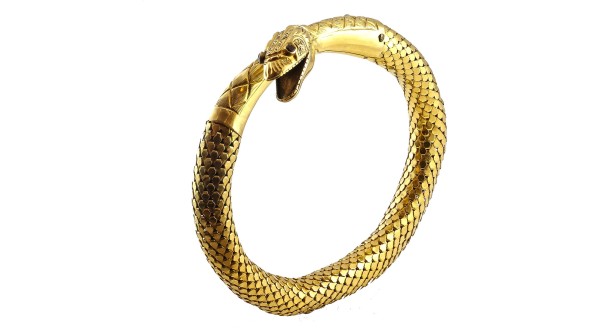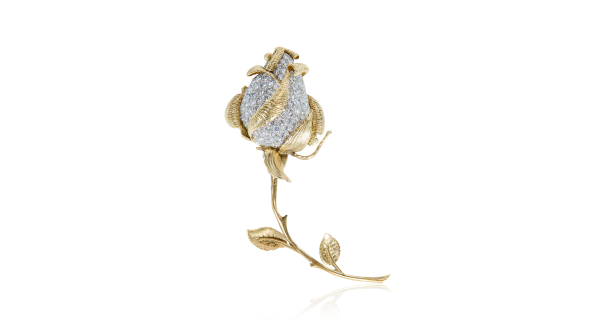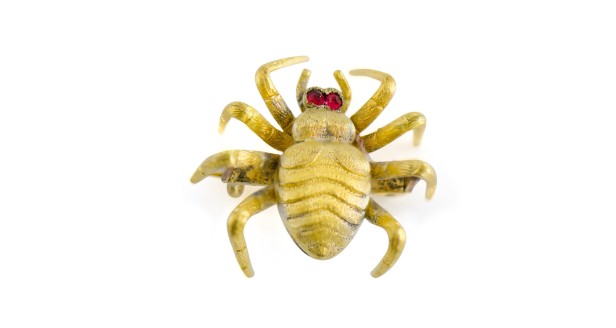The Victorian Era, aptly named for England’s beloved Queen Victoria, lasted from Victoria’s ascension to the throne in 1837 to her death in 1901. During this prosperous time, a burgeoning middle class sparked a demand for jewelry in the mass market. Queen Victoria, notorious for her affinity for jewelry, was known for making opulent gifts of jewelry and even designed several pieces herself. Encompassing 64 years, the Victorian era is often compartmentalized into three subperiods – the Romantic Period (1837-1861), the Grand Period (1861-1880), and the Late (or Aesthetic) Period (1880-1901).
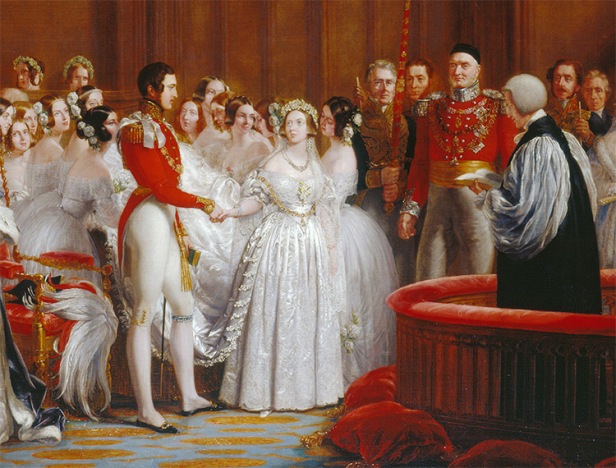
The Romantic Period, named for the notable affection between Prince Albert and the Queen, lasted until Albert’s death, which ushered in the Grand Period. Queen Victoria’s emerald serpentine engagement ring sparked a trend of snake motifs, considered a symbol of eternal love. Enameled serpents with diamond or garnet eyes and yellow gold bodies were fashioned into necklaces, rings, brooches, and bracelets, like this winding snake bangle from 1860, a signature style of the period, which popularized oversized bracelets and bangles with animal-motifs. Serpentine earrings, like these stunning dangling diamond and ruby snake earrings from Gleem, were a favored trend, as well.
The Romantic Period saw a new trend in acrostic jewelry, where multiple stones were used to spell out words or names, based on the first letter of the name of each stone. For instance, a ring that spelled “dearest” might be fashioned from a row consisting of a diamond, an emerald, an amethyst, a ruby, an emerald, a sapphire, and a topaz. Other popular rings from the period contained secret, hinged compartments behind the stones.
Unsurprisingly, flowers were a popular adornment in Romantic Period jewelry. Realistically rendered gold leaves, jewel-studded flower buds, and gilded thorns, like those in this thorny rose brooch, were a common sight in the Victorian woman’s jewelry box. Hands were another recurring motif, symbolizing friendship.
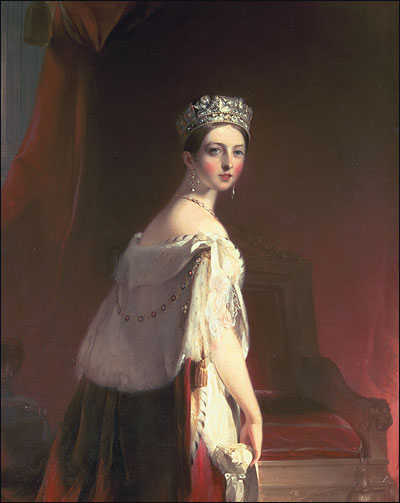
The formulation of the popular “en tremblant” technique allowed dangling ornamentations to flutter with the movements of their wearers. These elegant diamond chandelier earrings are a stellar example of this, and convertible to boot – wear them long and dangling, or as smaller drop clusters. These earrings are reminiscent of Girandoles, a popular Romantic Period style of drop cluster earrings with three dangling gemstones.
Queen Victoria had great affection for brooches, amassing a collection that boasted some truly unique heirlooms. When Victoria and Albert’s eldest child, also named Victoria, shed her first baby tooth, the couple, like many families, preserved it. Prince Albert tugged the tooth free himself in 1847, during a visit to Ardverikie as guests of the Duke of Abercorn. Commemorating both the landmark event in young Princess Vicky’s life and the enjoyable visit to Scotland (Victoria, smitten with Scotland, would soon go on to purchase the Balmoral Castle to have her own retreat in the Highlands), Prince Albert had Vicky’s baby tooth set in gold and fashioned into a blossom of gold and enamel thistle, the symbolic wildflower of Scotland.
Queen Victoria also loved traditional brooches, commissioning Garrard to forge three bow brooches and supplying the jeweler with 506 of her own diamonds. Queen Victoria left these trinkets to the royal family, deeming them “as belonging to the Crown and to be worn by all future Queens in right of it.” Gleem offers a slightly more modern take on the trend with this dazzling diamond and sapphire bow brooch from the 1920s. Golden and silver birds, often decorated with pearls and gems, were prominent brooch motifs, like this Victorian Era mockingbird with diamonds, rubies, and pearls.

(Left to right: Queen Alexandra wearing the bow brooches on her skirt at her first state opening of Parliament as Queen and at her coronation, Queen Mary using the brooches on her bodice on two occasions, and Queen Elizabeth, who can also be seen sporting the bow brooch below.)

Image Source
The Romantic Period also saw the rise in popularity of the cameo. Initially only available as souvenirs from the ancient ruins of Italy, cameo and intaglio, the reverse of cameo, became a popular choice for both brooches and rings. Usually carved from a shell, cameos might also be fashioned from coral or stone. Some of the most highly-covetable cameos were carved from the earthy colored lava from the base of Mount Vesuvius.
Teeth and hair were among the unusual elements of jewelry-making in the early part of the Victorian Era. Tightly woven strands of human hair were used instead of gold chains in necklaces, earrings, and bracelets. Animals, including serpents, birds, and spiders, were popular motifs in the jewelry of the Romantic Period.
Queen Victoria, England’s longest reigning monarch, saw a number of changes in industry, fashion, and jewelry, in particular. Horse-drawn carriages became automobiles, candles became lamps, but good style and exquisite taste remained timeless. Though each period of the Victorian Era saw different gemstones, metals, motifs, and fabricating techniques, many a jewelry trend carried on from period to period. Signature cuts of the Romantic Era include the rose cut (a round shape with a domed top and flat bottom), the old mine cut (a rounded square shape with many facets, like today’s modern round brilliant cut), and the cabochon (featuring a rounded top and flat bottom). Tragically, this lighthearted and tender period would conclude in 1861 with the death of Prince Albert, upon which Queen Victoria donned mourning attire for decades to come, marking the onset of the Grand Period. Learn all about it next Monday, when we’ll be discussing the Grand Period’s signature jewelry.
